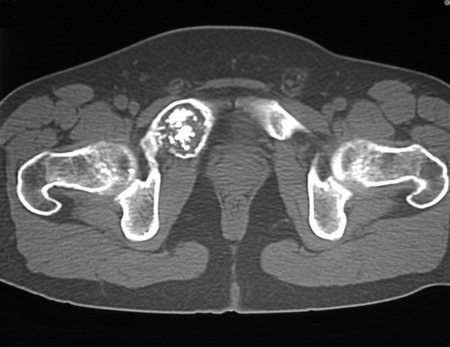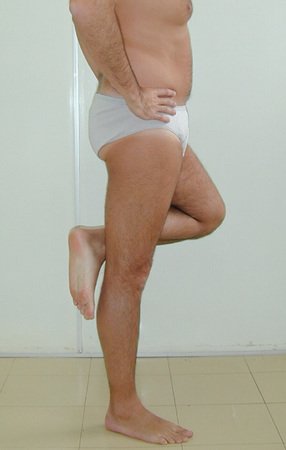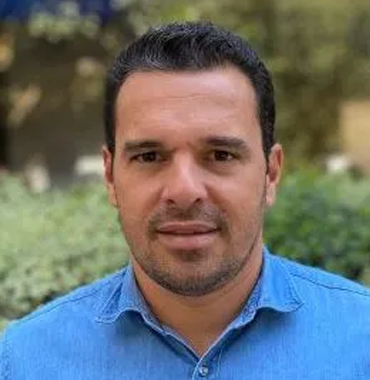
Branch Iliac Chondrosarcoma
The right hip X-ray showed a lesion in the iliopubic branch (Figure 1) and the scintigraphy only captured this region (Figure 2).
The tomography showed a lytic lesion, affecting part of the acetabular cavity and containing points of condensation suggestive of calcification foci (Figures 3 and 4). Detailed analysis of the radiographs (Figures 5 and 6) and tomographic sections (Figures 7 and 8) show an aggressive lesion, in the root of a limb, in a patient in his fourth decade.
We perform monthly image control, without biopsy. In the third month, with the images revealing the evolution of the lesion, we treated it oncologically as the aggressive lesion it was, considering the most likely hypothesis of chondrosarcoma. We performed complete resection of the lesion, with margins (Figures 9 and 10). You can observe the incision and the patient’s function after ten years (Figures 11 to 13).
Authors of the case
Author: Prof. Dr. Pedro Péricles Ribeiro Baptista
Orthopedic Oncosurgery at the Dr. Arnaldo Vieira de Carvalho Cancer Institute
Office : Rua General Jardim, 846 – Cj 41 – Cep: 01223-010 Higienópolis São Paulo – SP
Phone: +55 11 3231-4638 Cell:+55 11 99863-5577 Email: drpprb@gmail.com
















